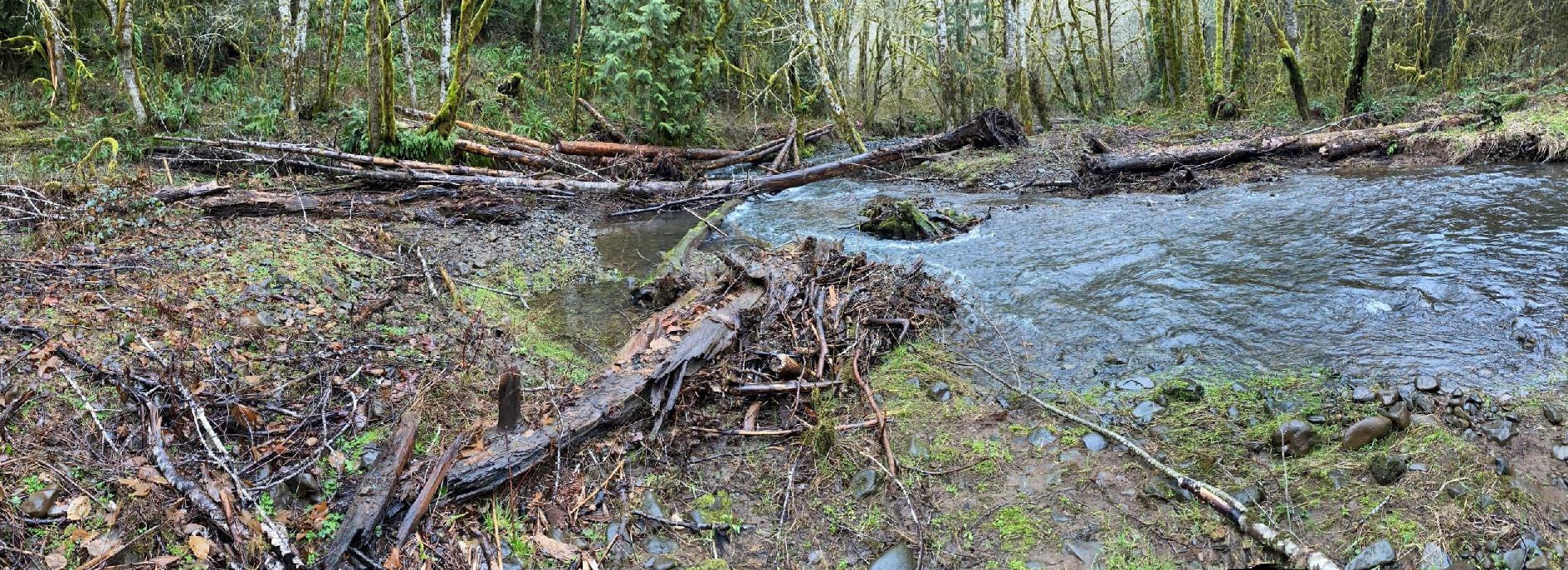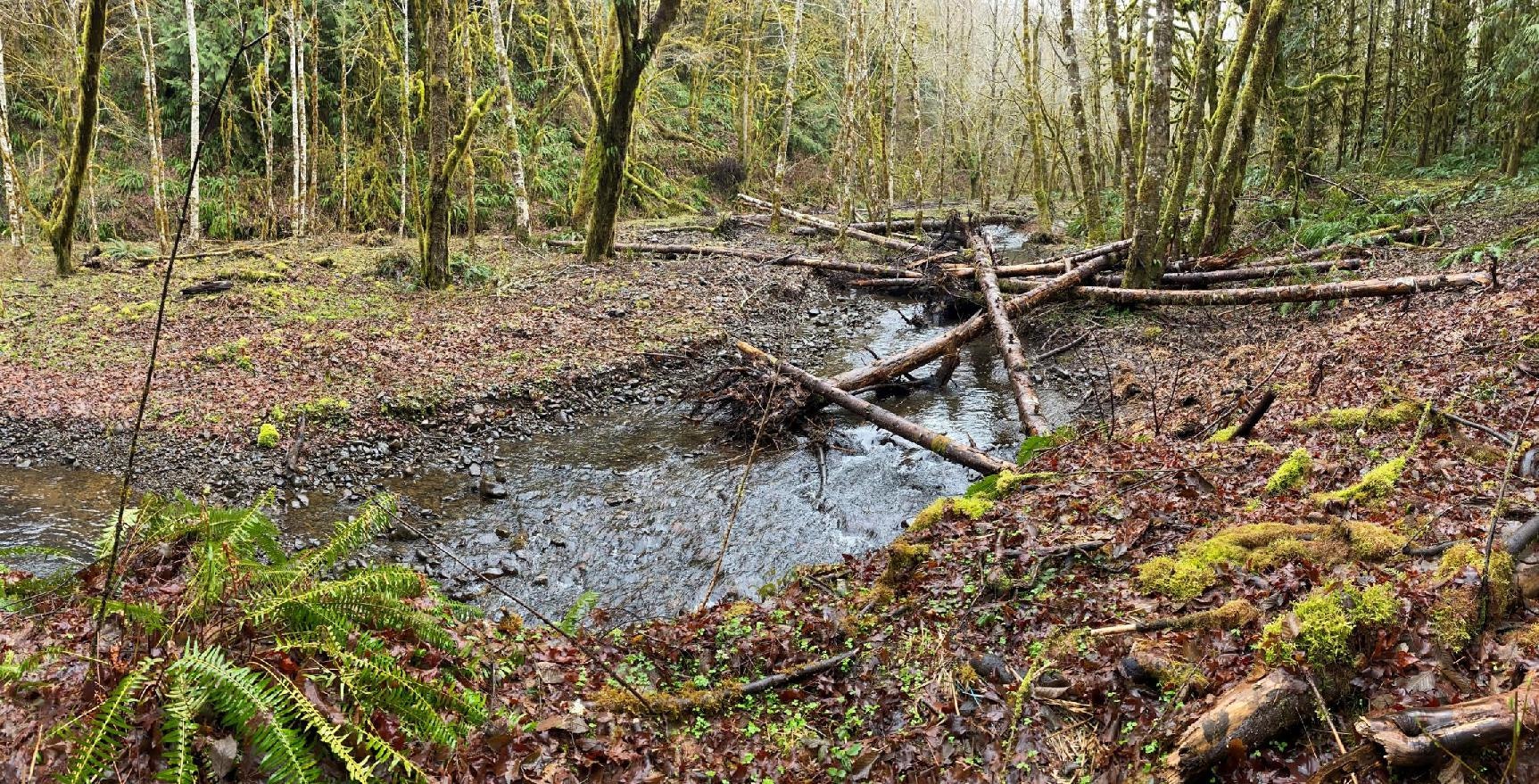Carcus Creek Habitat Enhancement
Carcus Creek, a tributary of the Clatskanie River, plays a vital role as a salmon-bearing stream. It supports the spawning and rearing of various salmonid species, including the federally threatened Southwest Washington Coho Salmon, Coastal Cutthroat Trout, and lower Columbia River Winter Steelhead. A healthy riparian buffer remains along Carcus Creek, despite historical practices like large woody debris removal before the 1960s. However, these past actions have led to challenges such as gravel loss, habitat homogenization, reduced cover for fisheries, and limited floodplain connectivity. The absence of large wood has negatively affected salmonid populations, hindering successful reproduction and juvenile survival.
Location: The project site is located on private land along Carcus Creek
Partners: The Oregon Watershed Enhancement Board (OWEB), The Lower Columbia River Watershed Council (LCRWC), The Oregon Department of Fish and Wildlife (ODFW), Aquatic Contracting, Private Landowners
Funding: The Oregon Watershed Enhancement Board (OWEB), ODFW Restoration and Enhancement Program
Total Awarded Amount: $265,606.25
Project Timeframe: March 2021 - February 2024
Background:
Carcus Creek, situated in the Clatskanie River sub-basin of the Columbia River basin, supports populations of the Endangered Species Act (ESA) listed Lower Columbia River coho along with species of concern like Southwestern Washington steelhead, coastal cutthroat trout, Pacific lamprey, and western brook lamprey. The Lower Columbia River Basin historically supported some of the largest anadromous (migrate from freshwater rivers to the ocean and back to spawn ) salmonid populations in the world. Historically, the Lower Columbia River Basin had robust salmonid populations, but human influences have led to significant declines, with Carcus Creek's salmonids now ESA-listed. Despite some recovery from past human impacts, Carcus Creek continues to lack critical habitat elements integral to supporting salmonid spawning and rearing life cycles. Anthropogenic influences have had long-lasting impacts to Carcus Creek resulting in a lack of large wood within the stream, greatly diminished substrate beds due to spawning gravel being stripped away, and homogenized in-stream habitat dominated by riffles and runs with limited pool occurrence and cover.
The Lower Columbia River Conservation and Recovery Plan for Oregon Populations of Salmon and Steelhead (ODFW 2010), identifies impaired habitat complexity and diversity, including access to off-channel habitat, as the primary limiting factor for fish species in the Clatskanie River sub-basin.
Work Done:
To enhance the spawning and rearing habitat for fish, the project installed unanchored large wood jams that mimic natural conditions. These jams were placed in 32 locations within a 1.25-mile range of the active channel of the lower reach of Carcus Creek. A total of 166 logs with rootwads were used for this purpose. Most of the installed log jams were made of 4-5 key pieces, while smaller jams had at least 2-3 key pieces. All trees that were removed to create access for equipment were also incorporated into the log jams, along with any naturally occurring wood within the installation locations. Smaller materials were intermixed within the jams to the extent possible. After the project, the exposed soils were stabilized using an erosion control mix that comprised of the native riparian grass species blue wildrye, meadow barley, and California brome. In addition, around 1500 shade-tolerant bare-root native trees of the species Western hemlock and grand fir, along with approximately 100 Western red cedar, were planted in areas adjacent to the stream which had been disturbed by the project.
In Summary:
Human activities have led to a significant decline in salmon populations, causing salmon in Carcus Creek to be listed as endangered. The lack of essential habitat elements crucial for supporting salmon life cycles has hindered their ability to reproduce successfully and survive as juveniles. To address this issue, this project was initiated to create and maintain important spawning and rearing habitats by strategically placing unanchored large wood jams in 32 locations along approximately 1.25 miles of Carcus Creek's lower reach.






























